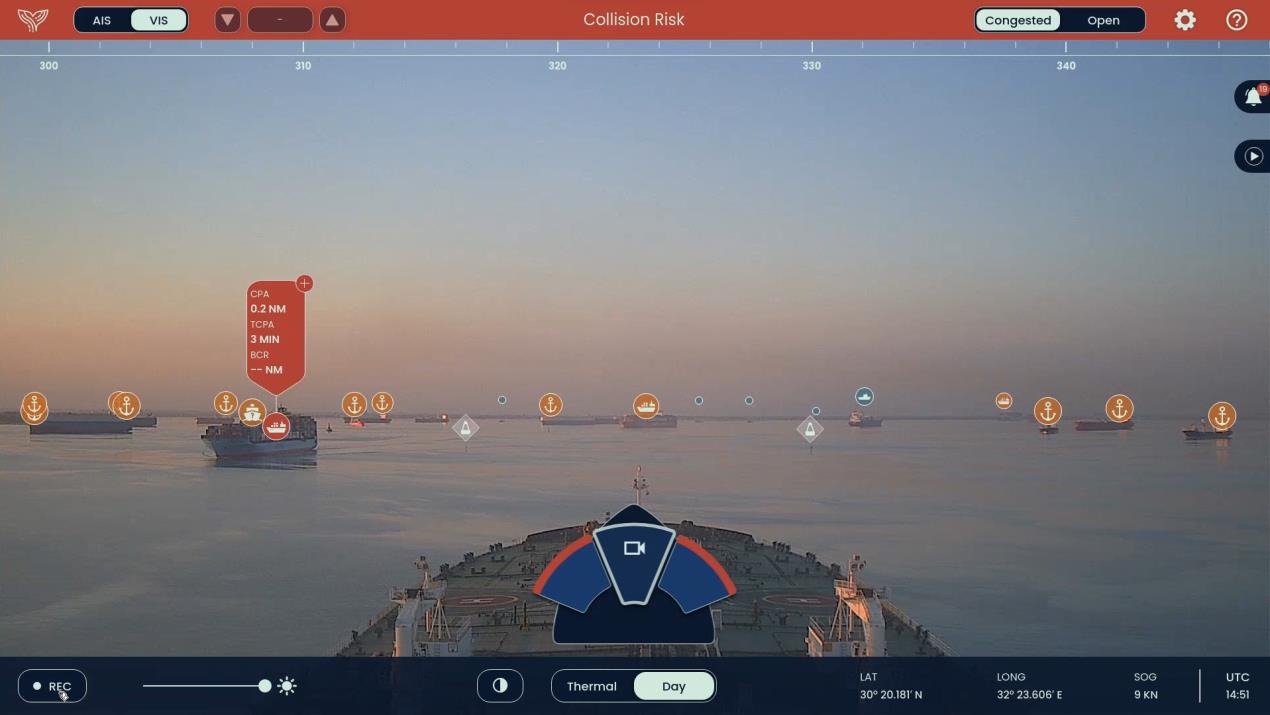A Saildrone USV has become the first unmanned vehicle to cross the Atlantic in both directions while simultaneously setting new records for the fastest west-to-east and east-to-west crossings.
A Saildrone unmanned surface vehicle (USV) known as SD 1021 has become the first autonomous vehicle to transit the Atlantic in both directions. What’s more, in making its 3,402-nautical mile (6,301.6-km) return passage from the UK to the US in 68 days, the wind-powered vessel not only achieved the first ever east-to-west Atlantic crossing by a USV, but it also broke the previous record for the fastest Atlantic crossing by an unmanned technology that it had set this past August when it took 75 days to arrive in Lymington, UK from Bermuda. Prior to that, the record had stood at 79 days for Offshore Sensing’s Sailbuoy, which travelled 2,700 nautical miles from Newfoundland to Ireland in 2018, becoming the first unmanned sailboat to complete the Microtransat Challenge and beating the 221-day record set in 2010 by an underwater glider designed by students at Rutgers University that transited 2,900 nautical miles from New Jersey to Spain.
“There are two typical transatlantic passages: from west to east, vessels take the northern route from New York to the English Channel, benefiting from prevailing westerlies and favourable current; east to west, vessels take the southern route, from Spain to Bermuda or the Caribbean,” US-headquartered Saildrone says. Although the southern route is almost 1,000 nautical miles longer, crewed vessels generally enjoy a smoother crossing, sailing with the trade winds and favourable current. However, Saildrone USVs “are designed to perform in the harshest ocean conditions on the planet, including those that crewed ships often avoid”. Consequently, on its east-to-west return trip, SD 1021 undertook the direct northern crossing, “sailing predominantly upwind and against the current” yet still completing the passage in well under three months.
Since its first deployment in the Arctic in 2018, SD 1021 has sailed a total of 14,969 nautical miles. This past January 31, it was deployed from Newport, Rhode Island on a 30-day mission to measure wintertime air-sea heat and carbon exchange in the Gulf Stream. During this time, the USV’s carbon composite wing was damaged in a storm that saw winds gusting to 58 knots (107 km/h) and waves reaching more than 12 metres. However, the USV’s backup systems allowed it to navigate to Bermuda, where it was retrofitted with a new wing before embarking on its record-breaking west-to-east Atlantic crossing.
Powered exclusively by the wind for propulsion, Saildrone’s distinctive USVs use solar energy to run on-board computers and navigational instruments. Capable of “sailing 100 km per day on average”, they are equipped “with a suite of science-grade sensors to collect oceanographic and meteorological data above and below the sea surface”, including wind speed and direction; air and sea surface temperature; atmospheric pressure; photosynthetically available radiation; wave height and period; dissolved oxygen; salinity; and acidity levels. In addition to “the standard Saildrone sensor suite”, SD 1021 is also fitted with an Acoustic Doppler Current Profiler (ADCP) to measure current strength and direction.
Providing “a fully managed data service to its users”, Saildrone operates its fleet of USVs along a Mission-as-a-Service (MAAS) model. As such, the company’s vessels, it says, are “actively engaged in fisheries, bathymetry and climate science missions” around the planet. “Vehicles can be deployed from any oceanside dock and autonomously navigate a set of prescribed waypoints before returning to port,” it continues, adding that Saildrone missions “are highly coordinated”, with mission managers working closely with research partners “to plan routes and equip the vehicles according to mission objectives”.
Expecting to deploy an additional 50 vehicles in 2020, the company reports that it is “building a global fleet of 1,000 saildrones targeting planetary coverage at a 6×6 degree resolution”, or one USV per 360 nautical square miles. The company’s goal, it continues, is to follow “the successful Argo network blueprint of 4,000 ocean profilers, which are quantifying the heat content of the deep ocean at a 3×3 degree resolution”.
“The endurance, reliability and scientific measurement capabilities of the Saildrone platform continue to grow from strength to strength,” says Saildrone founder and CEO Richard Jenkins. “During 2019, our saildrones have circumnavigated Antarctica, spent 700 days in the Arctic sampling the retreating ice edge, completed our first survey of the North Sea and now crossed the hostile North Atlantic in both directions. There is no part of the [unfrozen] ocean that we cannot now measure.”
































